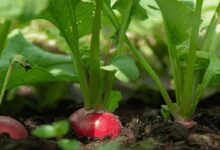Pea crop: Farmers should especially keep these things in mind while growing pea crops
Pea crop: For each crop, irrigation is a crucial procedure. Plants grow better when they are irrigated. Although pulse crops planted during the Rabi season need relatively little water, farmers nonetheless achieve high yields. Particularly with the pea crop, farmers should pay close attention to irrigation. due to the fact that pea crops need relatively little watering.

According to Dr. Puneet Kumar Pathak, the district horticulturist, this crop doesn’t need special irrigation since the land receives enough moisture during the winter. Irrigation should only be done during the blooming and pod production stages. Remember that water should not stand still on the field and that only mild irrigation should be done.
In one hectare, farmers may produce 18 to 30 quintals of peas if they use the proper technology. However, the overall cost of growing peas on a one-hectare plot of land is around twenty thousand rupees, while the profit may reach ninety thousand rupees.
Rhizobium might be impacted.
Pea plants have rhizobium in their roots; if there is even the slightest error in irrigating, rhizobium is impacted. Water logging causes rhizobium to be killed. The plants die and the crop turns yellow. It is crucial to use very little irrigation under such circumstances, and the field should have improved drainage and no water logging.
Remember these things while you’re watering.
The plants will get the necessary amount of water if a sprinkler or micro sprinkler is employed in place of the conventional method of irrigating pea crops. Rhizobium thrives. As a result, farmers will get high yield and the crop plants will be robust and healthy. The government also provides subsidies for sprinklers and small sprinklers. which farmers may use in their fields with ease.
When should a pea crop be irrigated?
With less water, pea crops are ready. In this case, it is crucial to do the first watering when the plants are in the process of blossoming. In addition, when the pods are produced, the second watering should be carried out. Remember that you should use very little water for this irrigation. Waterlogging should not occur. Drain the field right away if there is standing water.

